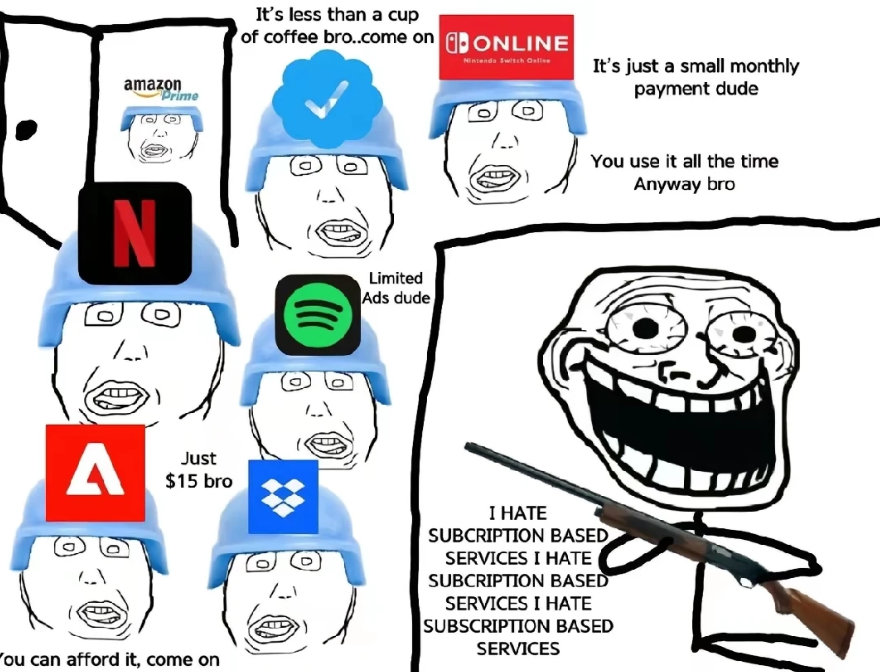this post was submitted on 23 Jan 2024
1415 points (97.6% liked)
memes
14820 readers
4398 users here now
Community rules
1. Be civil
No trolling, bigotry or other insulting / annoying behaviour
2. No politics
This is non-politics community. For political memes please go to [email protected]
3. No recent reposts
Check for reposts when posting a meme, you can only repost after 1 month
4. No bots
No bots without the express approval of the mods or the admins
5. No Spam/Ads
No advertisements or spam. This is an instance rule and the only way to live.
A collection of some classic Lemmy memes for your enjoyment
Sister communities
- [email protected] : Star Trek memes, chat and shitposts
- [email protected] : Lemmy Shitposts, anything and everything goes.
- [email protected] : Linux themed memes
- [email protected] : for those who love comic stories.
founded 2 years ago
MODERATORS
you are viewing a single comment's thread
view the rest of the comments
view the rest of the comments

Tfw I paid for a subscription to access my textbook this semester.
Granted, it's not just a textbook. My Spanish classes use VHL Central, which includes a textbook with videos, audio files, virtually endless practice assignments, and pretty much all of our assignments and course material.
It's a really great tool, I guess I just wish I could keep access to it after I graduated. (I think you can purchase a textbook, but definitely not the full program.) Ah, well. ¯\_(ツ)_/¯
That kind of model is unfortunately common for university courses. I had it for my language courses, and a couple of the core maths courses.
The online platform justifies a subscription by providing additional resources, homework grading, etc. Fair enough, honestly, if they want to charge you $15 or something reasonable. But when textbook access gets rolled into the bundle, it tends to inflate the subscription cost and also have the convenient-for-the-publisher side effect of temporary access to the text. Lose-lose, from a student perspective.
I had a course that required we buy a license to Pearson's service in order to submit homework. $100+ to view a pdf for a semester and submit homework through a buggy form interface. I still hold a grudge against everyone in the department for that decision.
With that model the company can afford to offer far more content than with a pay-once model. With a pay-once model they only generate enough income to be able to offer a book, and maybe a smattering of supplementary material. Go subscription-based however, revenue increases, so output increases and now they can afford to create and maintain a whole lot more while keeping the price affordable to those who need it during the period that they need it.
It's a similar principle to renting vs buying. If they were to offer all of those materials as a one-off purchase at a price that would allow their business to be sustainable, it would cost more than most are able to afford.
If we go back to one-off purchases, we go back to getting less for life as opposed to a lot for a limited period of time. It's a trade off, and clearly one that most people are willing to make.
People get so angry (OP) about the way things are just because they're unhappy in general and looking for something to blame. Not all companies are fair with their subscription models, but most are. Not every company cares about their customers, but most do. Some companies are run by sociopaths, but most are run by normal, nice people.